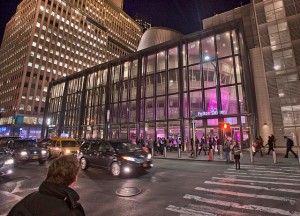The new Fulton Center subway station is having some people moving problems that have nothing to do with trains. The lead from a story in the NY Daily News from last Friday,
Apparently $1.4 billion doesn’t buy working elevators and escalators.
Oh, a few outages in a brand new station is to be expected, even if it did cost them a billion and a half dollars. This is New York. We pay $10 to ride in a yellow car for 15 minutes. It could be worse. WMATA, (which looks fun to say if emphasize the Wh- sound) is the agency that operates the DC Metro. It has spent decades breaking in its elevators and escalators that are now mostly just plain broken. Last year, Metro bosses said the organization would fix 79 escalators and elevators by the end of its fiscal year and were excited when it got 3/4 of them done. Jesus.
Which is why it always struck me as a bit of a gamble that the MTA’s East Side Access project – that will connect the Long Island Rail Road to Grand Central – includes an extensive escalator network. 47 in all will bring people up and down from the LIRR tracks 15 stories below the street. That’s waaaaayyyyy below the current lower level, where you find all the restaurants and homeless people. But, escalators moving people from train platforms is in sharp contrast to the rest of Grand Central. The terminal is mostly free of elevators and stairs (escalators were not prevalent in the early 1900’s). Instead, ramps are the main way people get around in GCT and that is by design. From an NPR interview with Sam Roberts, the author of “Grand Central: How a Train Station Transformed America,”
Another Grand Central innovation was the ramp. “The place has virtually no staircases… long-distance travelers were coming in with suitcases, lots of luggage, and the ramps were built to accommodate them.
The shear number of escalators will hopefully give commuters enough working options to get to the surface when break downs or maintenance occurs. But, why not ramps, or at least a mix of ramps? Stadiums use extensive ramp systems that seem to get people at least down. And, of course,ramps do not require much of a breaking-in period, because, well, they are ramps.
